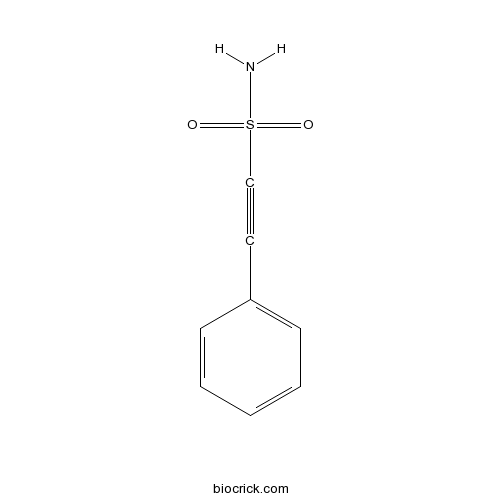Apoptosis
Apoptosis, also known as programed cell death, is a tightly controlled cellular process which is characterized by membrane blebbing, cell shrinkage, chromatin condensation, and DNA fragmentation.
Products for Apoptosis
- IAP(8)
- Apoptosis Inducers(30)
- p53(25)
- Caspase(21)
- PC-PLC(4)
- Bcl-2 Family(22)
- PKD(2)
- TNF-α(9)
- MDM2(9)
- Other Apoptosis(9)
- Bcl-xL(1)
- KEAP1-Nrf2(5)
- Thymidylate Synthase(4)
- 14.3.3 Proteins(1)
- Survivin(1)
- Cat.No. Product Name Information
-
BCC5372
BV6
BV6 is an antagonist of cIAP1 and XIAP, members of the inhibitors of apoptosis (IAP) family.
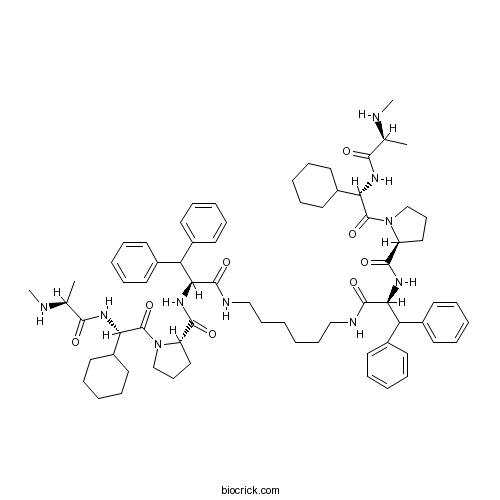
-
BCC1691
LCL161
LCL161 is a IAP inhibitor which inhibits XIAP in HEK293 cell and cIAP1 in MDA-MB-231 cell with IC50s of 35 and 0.4 nM, respectively.
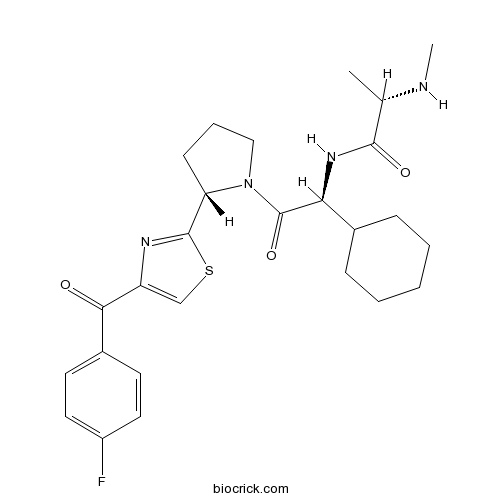
-
BCC2389
NSC 687852 (b-AP15)
b-AP15 is a specific inhibitor of the deubiquitinating enzymes UCHL5 and Usp14.
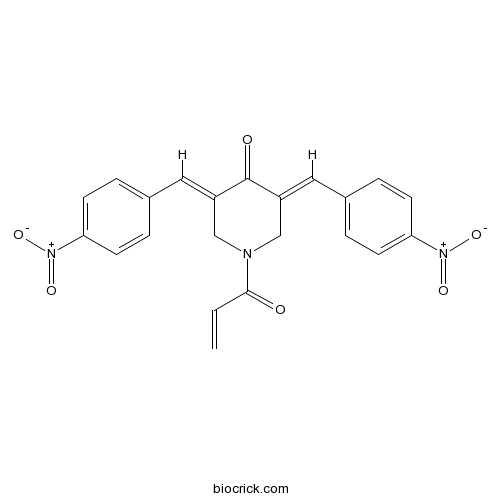
-
BCC3889
Tenovin-3
Tenovin-3 is able to increase p53 levels, determined in MCF-7 cells treated for 6 hr at 10 μM.
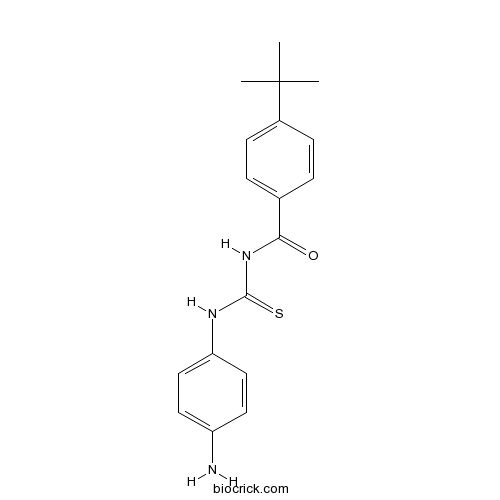
-
BCC2360
PETCM
PETCM is an activator of caspase-3 and acts as an cytochrome c (cyto c)-dependent manner. PETCM promotes Apaf-1 oligomerization and induces cell apoptosis in HeLa cells.
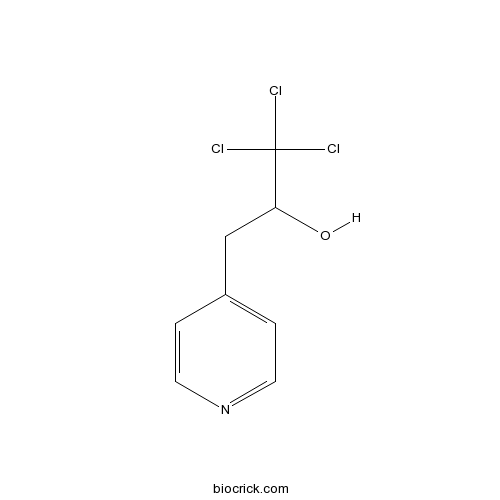
-
BCN5384
Atractylic acid dipotassium salt
Atractyloside potassium salt is a toxic diterpenoid glycoside isolated from the fruits of Xanthium sibiricum. Atractyloside potassium salt is a powerful and specific inhibitor of mitochondrial ADP/ATP transport. Atractyloside potassium salt inhibits chloride channels from mitochondrial membranes of rat heart.
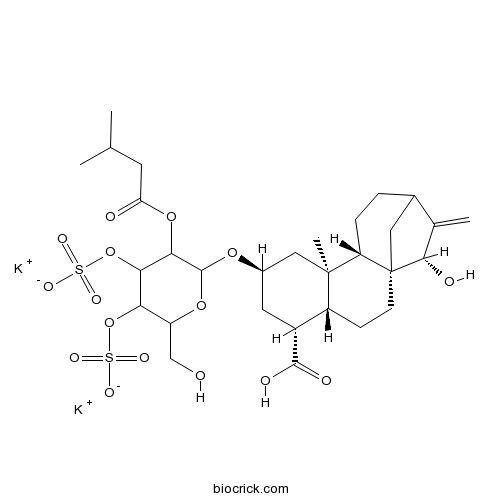
-
BCC2415
RETRA hydrochloride

-
BCC1283
AT-406 (SM-406)
Xevinapant (AT-406) is a potent and orally bioavailable Smac mimetic and an antagonist of IAPs, and it binds to XIAP, cIAP1, and cIAP2 proteins with Ki of 66.4, 1.9, and 5.1 nM, respectively.
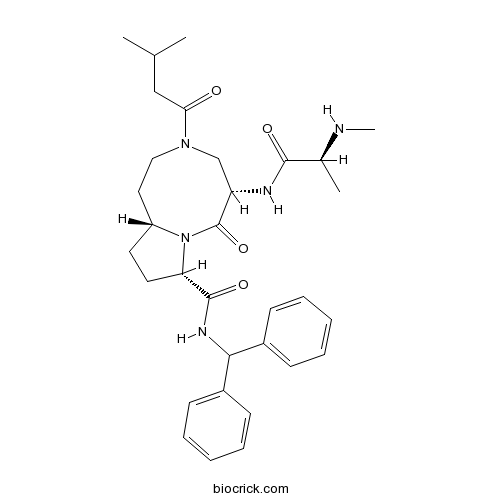
-
BCC1961
SPK-601
SPK-601 (LMV-601) is an inhibitor of the phosphatidylcholine-specific phospholipase C (PC-PLC). SPK-601 also can be used as an antimicrobial agent.
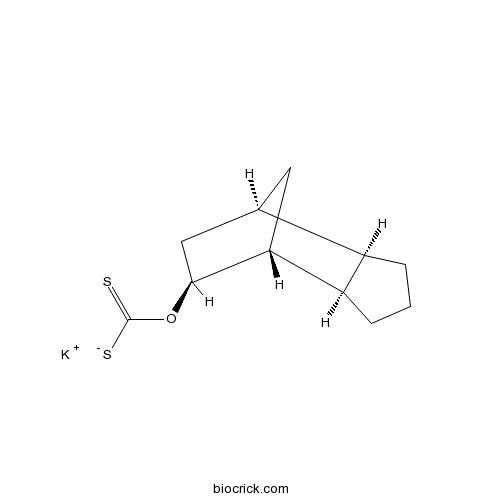
-
BCC1125
Q-VD-OPh hydrate
Q-VD-OPh is an irreversible pan-caspase inhibitor with potent antiapoptotic properties; inhibits caspase 7 with an IC50 of 48 nM and 25-400 nM for other caspases including caspase 1, 3, 8, 9, 10, and 12. Q-VD-OPh can inhibits HIV infection. Q-VD-OPh is able to cross the blood-brain barrier.

-
BCC2012
Trabectedin
Trabectedin (Ecteinascidin 743; ET-743) a tetrahydroisoquinoline alkaloid with potent antitumor activity isolated from Ecteinascidia turbinata. Trabectedin binds to the minor groove of DNA, blocks transcription of stress-induced proteins, induces DNA backbone cleavage and cancer cells apoptosis, and increases the generation of ROS in MCF-7 and MDA-MB-453 cells. Trabectedin has tje potential for soft tissue sarcoma and ovarian cancer treatment.
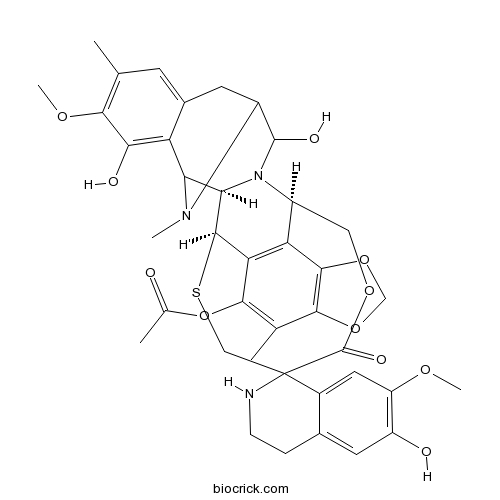
-
BCC2406
CP 31398 dihydrochloride
p53-stabilizing agent
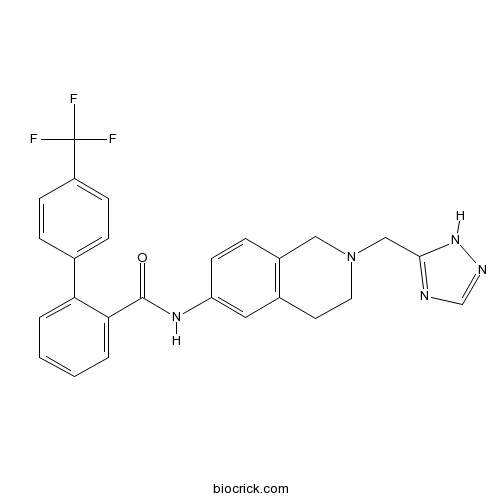
-
BCC4098
Marinopyrrole A
Maritoclax (Marinopyrrole A) is a novel and specific Mcl-1 inhibitor with an IC50 value of 10.1 μM, and shows >8 fold selectivity than BCL-xl (IC50 > 80 μM).
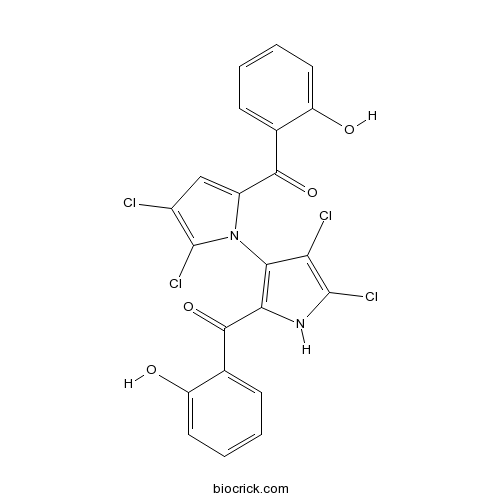
-
BCC2236
Sabutoclax
Sabutoclax is a potent and effective Bcl-2 Family (Bcl-2, Bcl-XL, Mcl-1, Bfl-1) inhibitor with IC50s of 0.32 μM, 0.31 μM, 0.20 μM, and 0.62 μM, respectively.
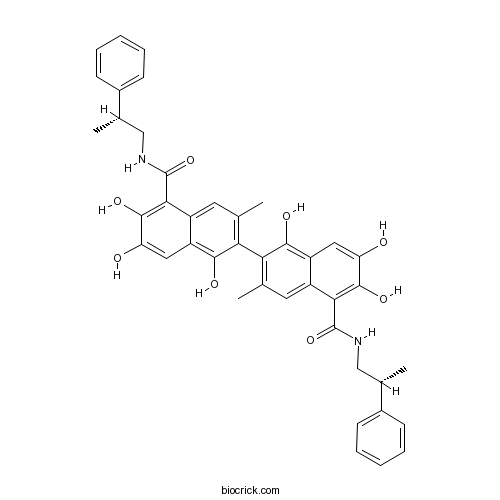
-
BCC1895
RG7388
Idasanutlin (RG7388) is a potent and selective MDM2 antagonist, inhibiting p53-MDM2 binding, with an IC50 of 6 nM.
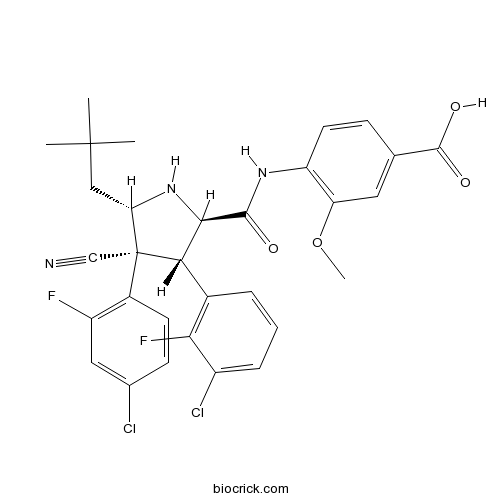
-
BCC1675
kb NB 142-70
kb NB 142-70 is a potent PKD inhibitor, with IC50s of 28.3, 58.7 and 53.2 nM for PKD1, PKD2, and PKD3, respectively. kb NB 142-70 also has antitumor activity.
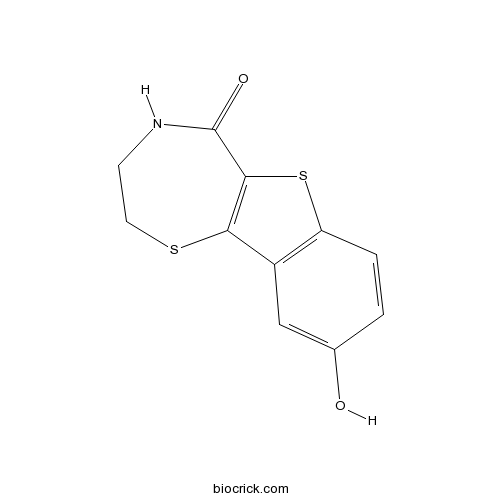
-
BCC1697
Lenalidomide hydrochloride
Lenalidomide hydrochloride (CC-5013 hydrochloride) is a derivative of Thalidomide and an orally active immunomodulator. Lenalidomide hydrochloride (CC-5013 hydrochloride) is a ligand of ubiquitin E3 ligase cereblon (CRBN), and it causes selective ubiquitination and degradation of two lymphoid transcription factors, IKZF1 and IKZF3, by the CRBN-CRL4 ubiquitin ligase. Lenalidomide hydrochloride (CC-5013 hydrochloride) specifically inhibits growth of mature B-cell lymphomas, including multiple myeloma, and induces IL-2 release from T cells.
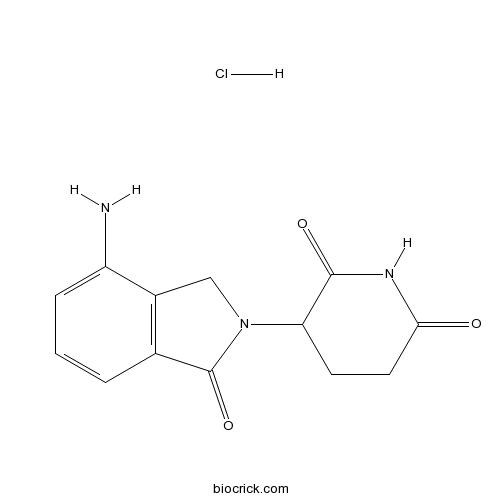
-
BCC3614
ABT-199
Venetoclax (ABT-199; GDC-0199) is a highly potent, selective and orally bioavailable Bcl-2 inhibitor with a Ki of less than 0.01 nM. Venetoclax induces autophagy.
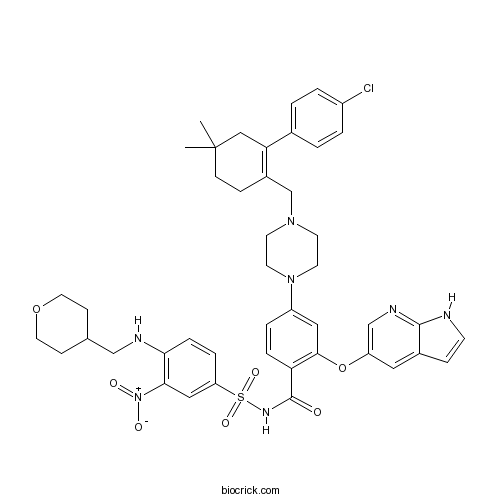
-
BCC2250
Birinapant (TL32711)
Birinapant (TL32711), a bivalent Smac mimetic, is a potent antagonist for XIAP and cIAP1 with Kds of 45 nM and less than 1 nM, respectively. Birinapant (TL32711) induces the autoubiquitylation and proteasomal degradation of cIAP1 and cIAP2 in intact cells, which results in formation of a RIPK1: caspase-8 complex, caspase-8 activation, and induction of tumor cell death. Birinapant (TL32711) targets TRAF2-associated cIAPs and abrogates TNF-induced NF-κB activation.
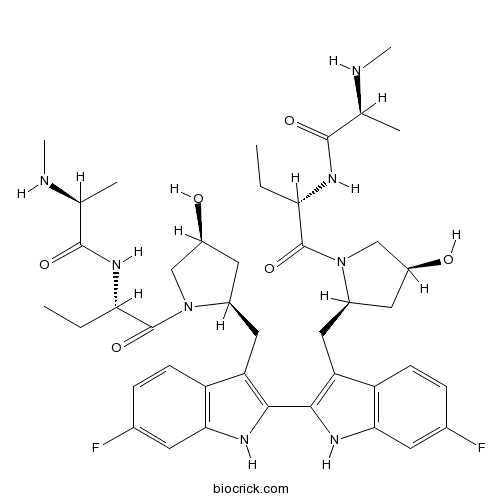
-
BCC5648
MI-773 (SAR405838)
SAR405838 is a highly potent and selective MDM2 inhibitor, binds to MDM2 with Ki= 0.88 nM and has high specificity over other proteins.
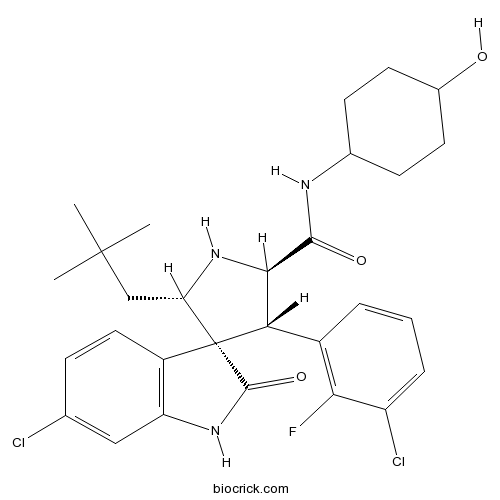
-
BCC5395
NVP-CGM097
NVP-CGM097 is a potent and selective MDM2 inhibitor with IC50 of 1.7±0.1 nM for hMDM2.
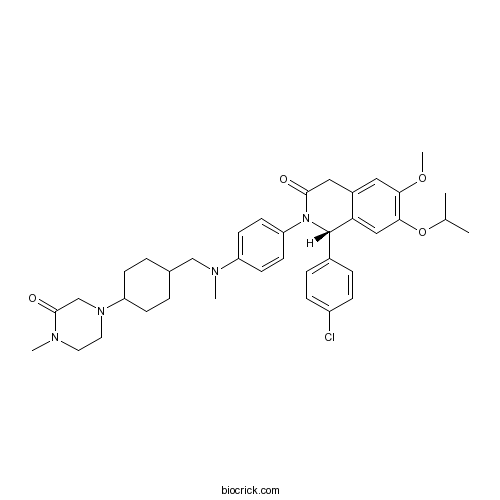
-
BCC2395
Bax inhibitor peptide, negative control
Negative control peptide for Bax inhibitor peptide V5

-
BCC3992
AMG232
AMG 232 is a potent, selective and orally available inhibitor of p53-MDM2 interaction, with an IC50 of 0.6 nM. AMG 232 binds to MDM2 with a Kd of 0.045 nM.
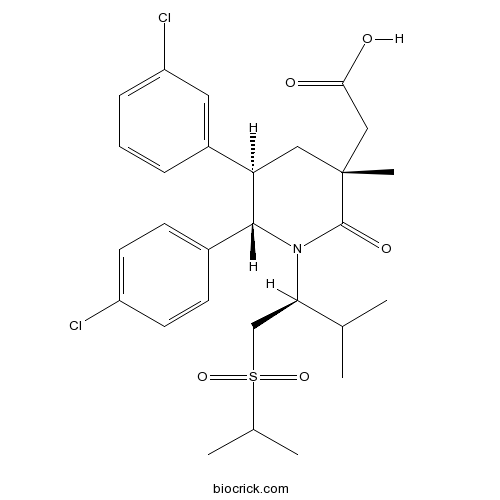
-
BCC7992
Necrosulfonamide
(E)-Necrosulfonamide is a necroptosis inhibitor acting by selectively targeting the mixed lineage kinase domain-like protein (MLKL) to block the necrosome formation.
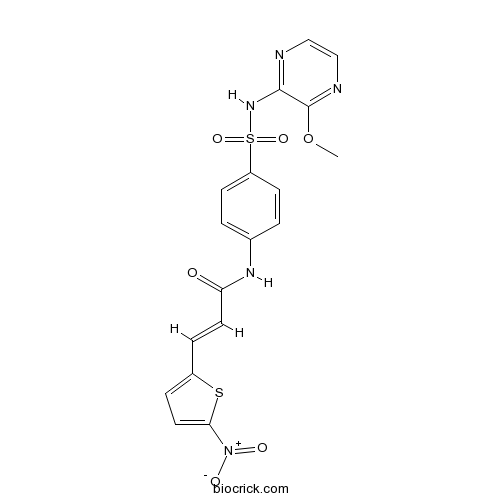
-
BCC5454
YH239-EE
YH239-EE, ethyl ester of the free carboxylic acid compound YH239, is a potent p53-MDM2 antagonizing and apoptosis-inducing agent.
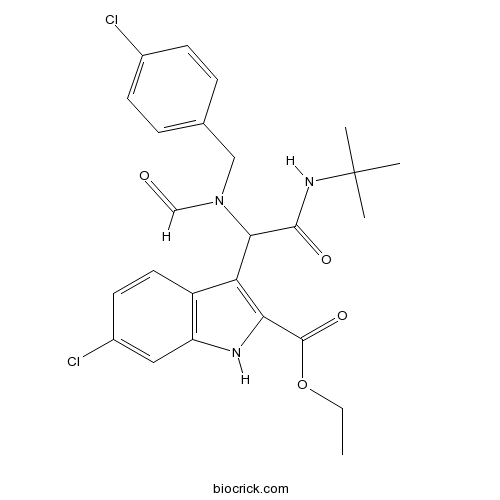
-
BCC2235
BM-1074
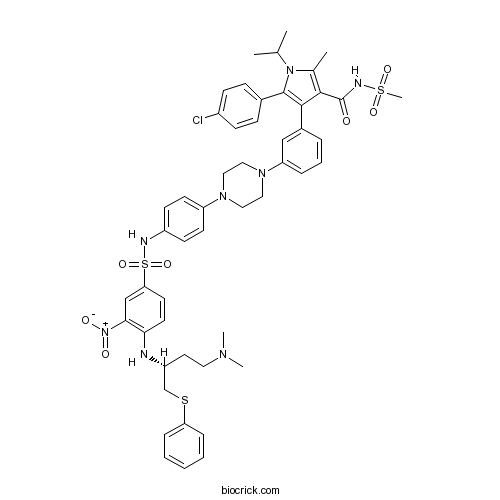
-
BCC8091
U 73343
U-73343, an inhibitor of PLC (putative phospholipase C)-dependent processes, is an analog of U-73122 and can be used as a negative control.
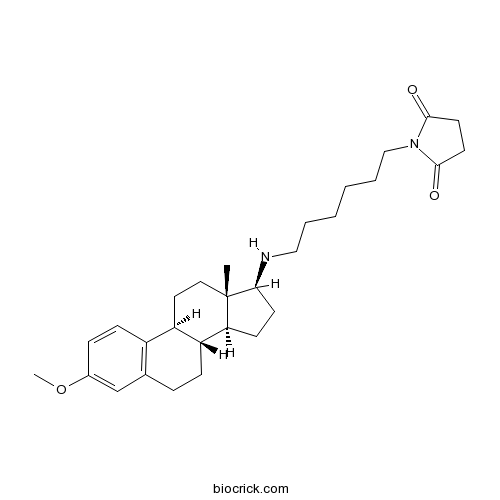
-
BCC2055
WEHI-539
WEHI-539 is a selective inhibitor of Bcl-XL with an IC50 of 1.1 nM.
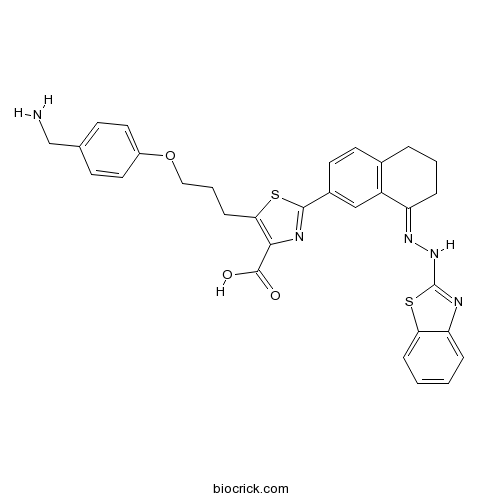
-
BCC1955
SMIP004
SMIP004 is a SKP2 E3 ligase inhibitor, which downregulates SKP2 and to stabilise p27. SMIP004 is a cancer cell selective apoptosis inducer of human prostate cancer cells.
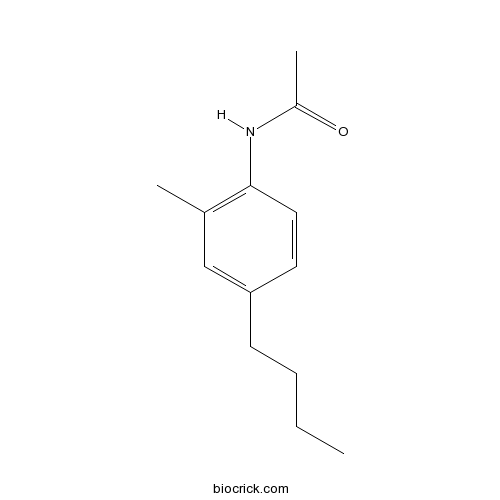
-
BCC2417
WR 1065
WR-1065 dihydrochloride can protect normal tissues from the toxic effects of certain cancer drugs and activate p53 through a JNK-dependent signaling pathway.
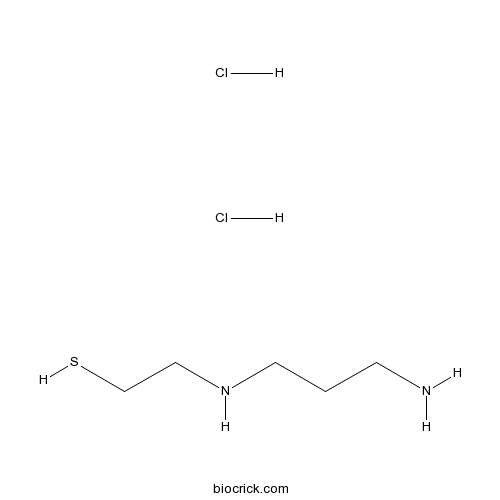
-
BCC5281
Omaveloxolone (RTA-408)
Omaveloxolone (RTA 408) is an antioxidant inflammation modulator (AIM), which activates Nrf2 and suppresses nitric oxide (NO). Omaveloxolone attenuates osteoclastogenesis by inhibiting STING dependent NF-κb signaling.
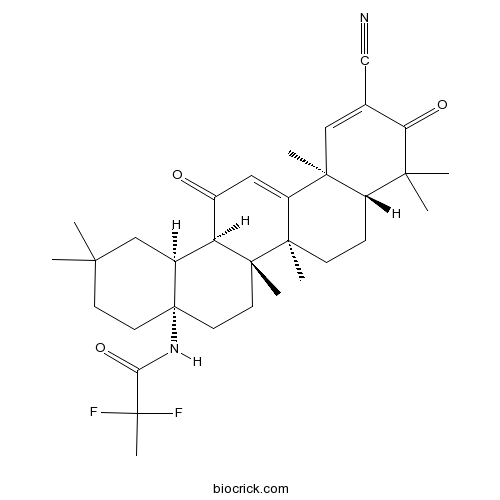
-
BCC2403
Melphalan
Melphalan is an effective DNA alkylating agent, with potent antitumor activity.
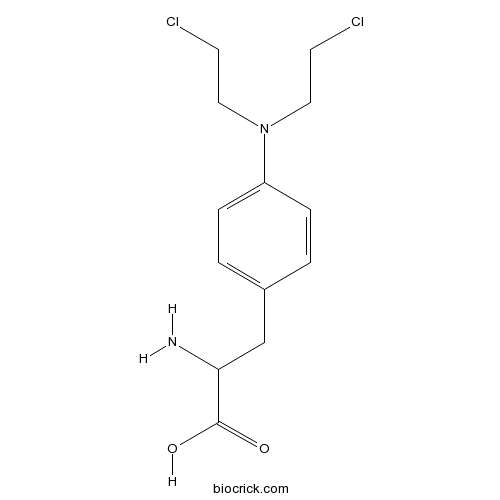
-
BCC6430
Nolatrexed (AG-337)
Nolatrexed dihydrochloride (AG 337) is a non-competitive lipophilic inhibitor of thymidylate synthase, interacts at the folate cofactor binding site of the enzyme, with a Ki of 11 nM for human thymidylate synthase. Nolatrexed dihydrochloride (AG 337) has anti-cancer activity, induces cell cycle arrest in S phase of cancer cells.
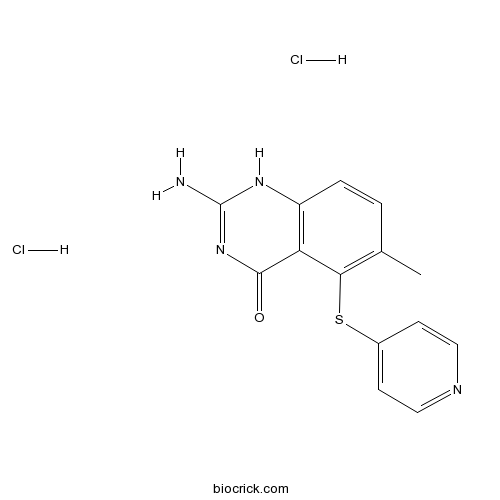
-
BCC2387
CHM 1
Potent antitumor agent; inducer of apoptosis
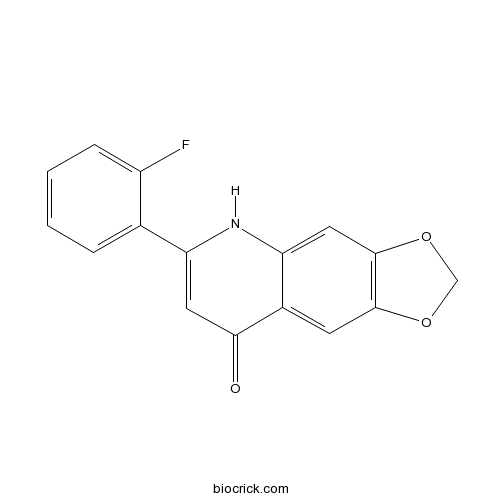
-
BCN1552
Cisplatin
Potent pro-apoptotic anticancer agent; activates caspase-3,Cisplatin is an inorganic platinum complex, which is able to inhibit DNA synthesis by conforming DNA adducts in tumor cells.

-
BCC3989
ONC201
TIC10 is a potent, orally active, and stable tumor necrosis factor-related apoptosis-inducing ligand (TRAIL) inducer which acts by inhibiting Akt and ERK, consequently activating Foxo3a and significantly inducing cell surface TRAIL. TIC10 can cross the blood-brain barrier.

-
BCC6508
A-1210477
A-1210477 is a potent and selective inhibitor of MCL-1 with a Ki of 0.45 nM.
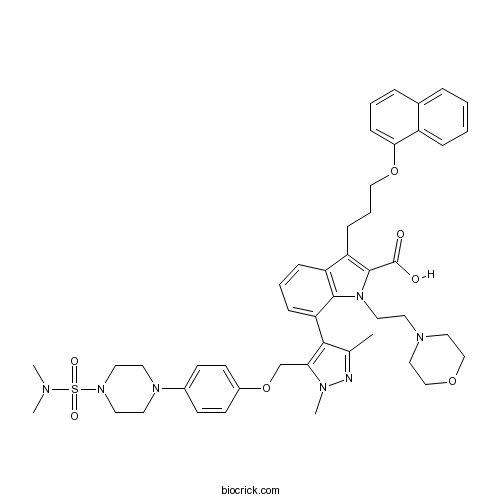
-
BCC6520
PD-1/PD-L1 inhibitor 2
BMS-202 is a potent and nonpeptidic PD-1/PD-L1 complex inhibitor with an IC50 of 18 nM and a KD of 8 μM. BMS-202 binds to PD-L1 and blocks human PD-1/PD-L1 interaction. BMS-202 has antitumor activity.
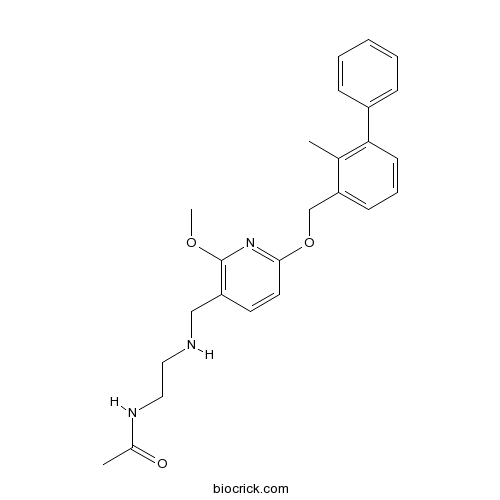
-
BCC2404
NQDI 1
NQDI-1 inhibits apoptosis signal-regulating kinase 1 (ASK1) with a Ki of 500 nM and an IC50 of 3 μM.
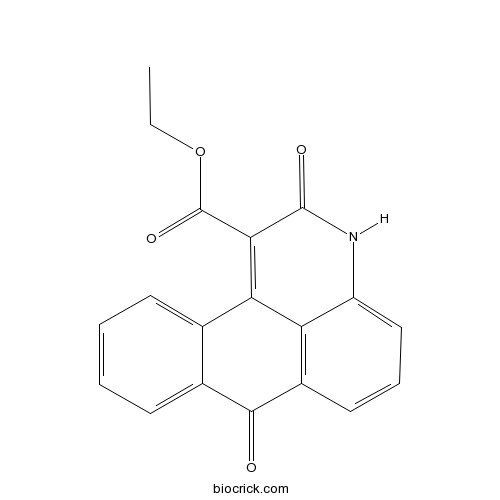
-
BCC1126
Z-VAD-FMK
Z-VAD(OMe)-FMK (Z-Val-Ala-Asp(OMe)-FMK) is a cell-permeable and irreversible pan-caspase inhibitor. Z-VAD(OMe)-FMK is an ubiquitin carboxy-terminal hydrolase L1 (UCHL1) inhibitor. Z-VAD(OMe)-FMK irreversibly modifies UCHL1 by targeting the active site of UCHL1.
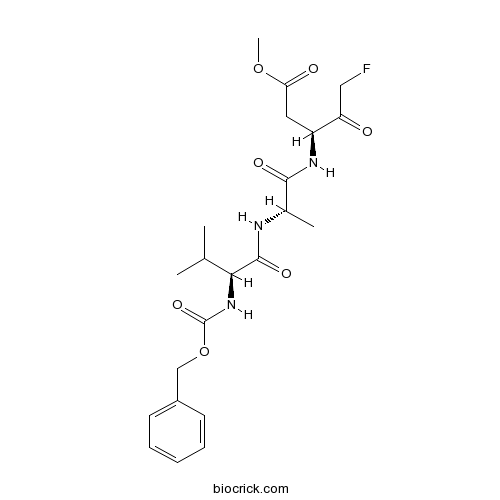
-
BCC1128
Boc-D-FMK
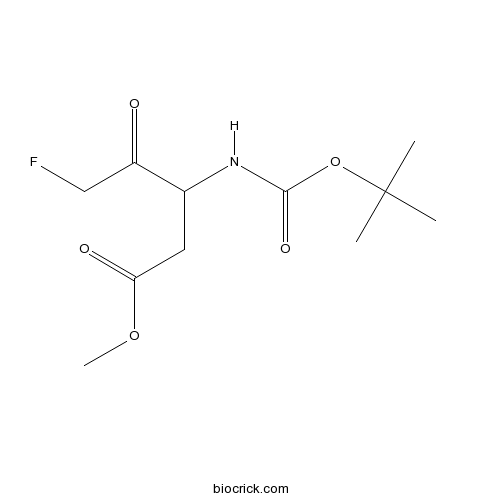
-
BCN3834
Streptozotocin
Streptozocin is a potent DNA-methylating antibiotic. Streptozotocin causes methylation of liver and kidney and pancreatic DNA, but no methylation in brain DNA.
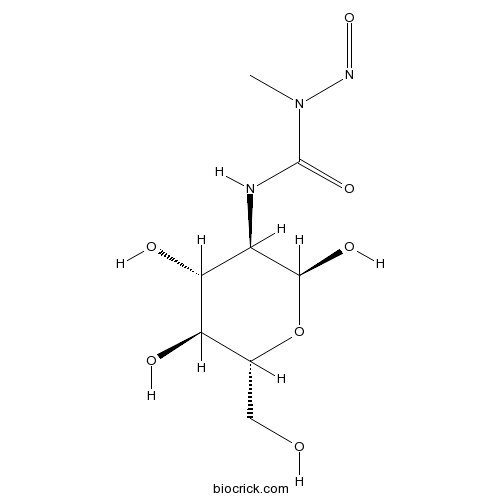
-
BCC2386
C 75
trans-C75 ((±)-C75) is an enantiomer of C75. C75 is a synthetic fatty-acid synthase (FASN) inhibitor.
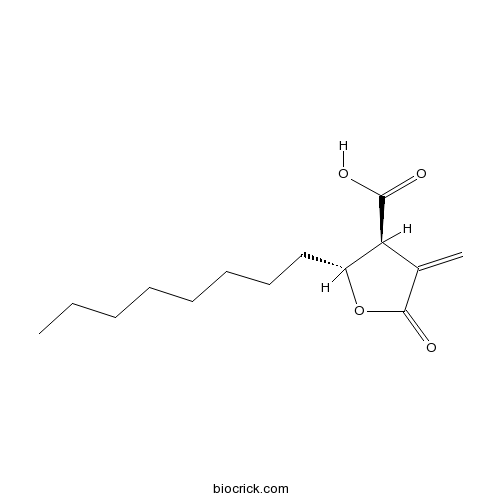
-
BCC2246
Pomalidomide (CC-4047)
Pomalidomide is the third-generation immunomodulatory agent, functions through interacting with the E3 ligase cereblon and induces degradation of essential Ikaros transcription factors.
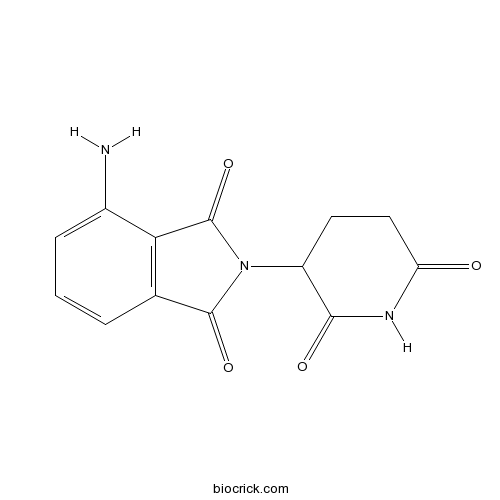
-
BCC2245
Lenalidomide (CC-5013)
Lenalidomide (CC-5013) is a derivative of Thalidomide and an orally active immunomodulator. Lenalidomide (CC-5013) is a ligand of ubiquitin E3 ligase cereblon (CRBN), and it causes selective ubiquitination and degradation of two lymphoid transcription factors, IKZF1 and IKZF3, by the CRBN-CRL4 ubiquitin ligase. Lenalidomide (CC-5013) specifically inhibits growth of mature B-cell lymphomas, including multiple myeloma, and induces IL-2 release from T cells.

-
BCC1306
3,3'-Diindolylmethane
3,3'-Diindolylmethane is a strong, pure androgen receptor (AR) antagonist.
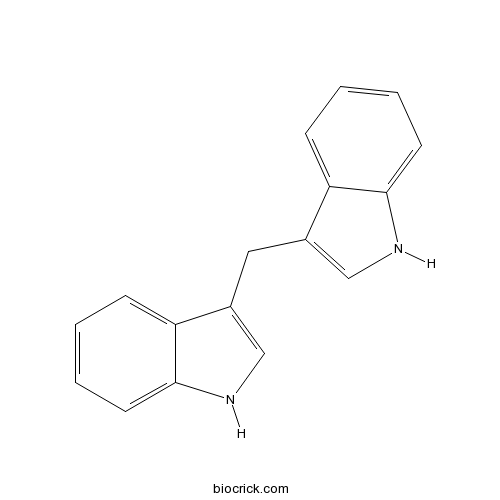
-
BCN4037
Piplartine
Piperlongumine is a natural alkaloid isolated from Piper longum Linn, possesses ant-inflammatory, antibacterial, antiangiogenic, antioxidant, antitumor, and antidiabetic activities. Piperlongumine induces ROS, and induces apoptosis in cancer cell lines. Piperlongumine shows anti-cardiac fibrosis activity, suppresses myofibroblast transformation via suppression of the ERK1/2 signaling pathway.
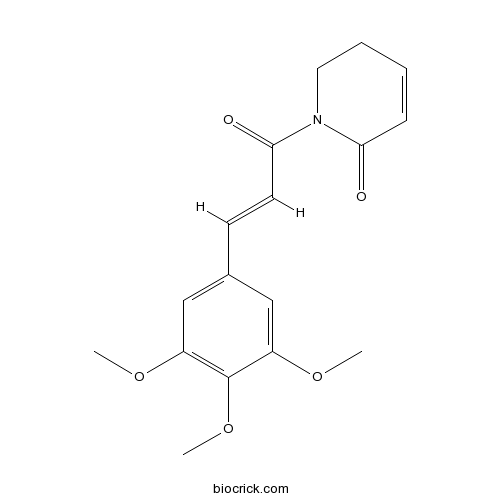
-
BCC1137
Z-DEVD-FMK
Z-DEVD-FMK is a specific and irreversible caspase-3 inhibitor with IC50 of 18 μM.
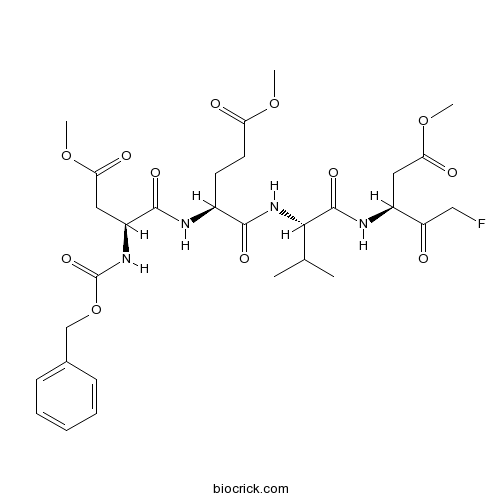
-
BCC5116
Z-IETD-FMK
Z-IETD-FMK (Z-IE(OMe)TD(OMe)-FMK) is a selective and cell permeable caspase-8 inhibitor. Z-IETD-FMK is also a granzyme B inhibitor.
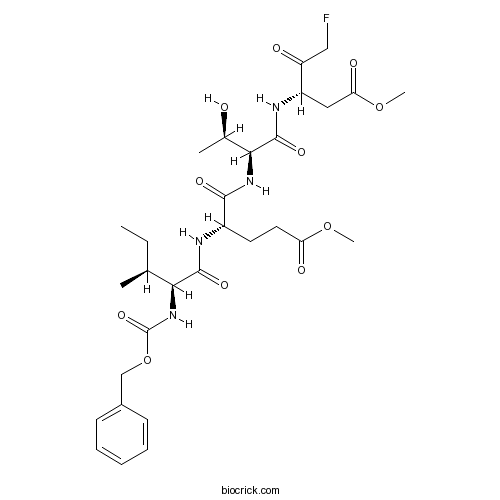
-
BCC1139
Z-WEHD-FMK
Z-WEHD-FMK is a potent, cell-permeable and irreversible caspase-1/5 inhibitor. Z-WEHD-FMK also exhibits a robust inhibitory effect on cathepsin B activity (IC50=6 μM). Z-WEHD-FMK can be used to investigate cells for evidence of apoptosis.
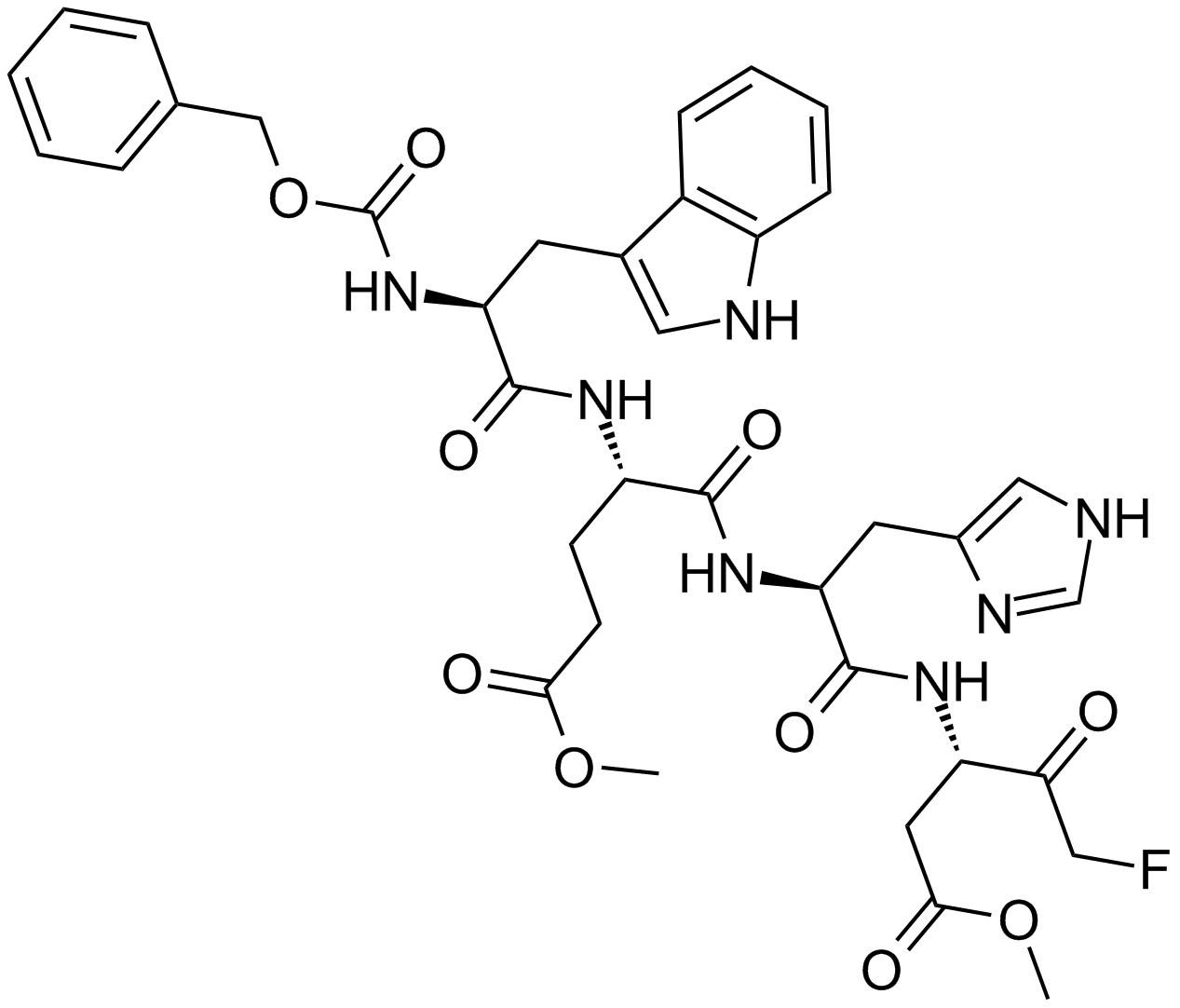
-
BCC2359
Ac-LEHD-AFC
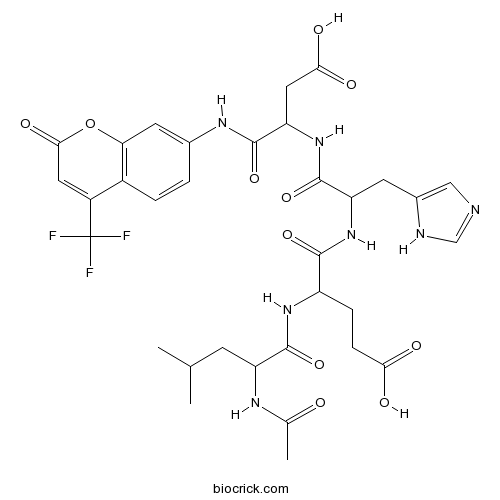
-
BCC5117
Z-LEHD-FMK
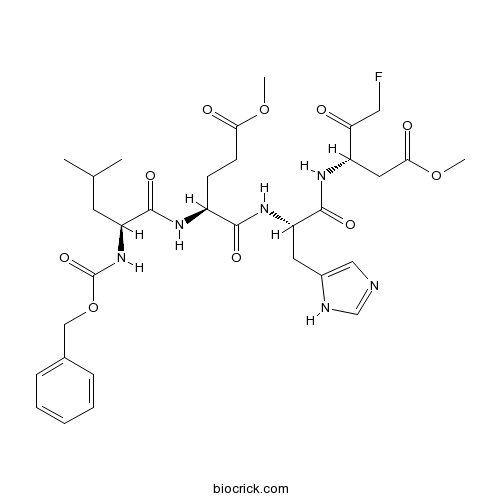
-
BCC2383
R18
Inhibitor of 14.3.3 proteins
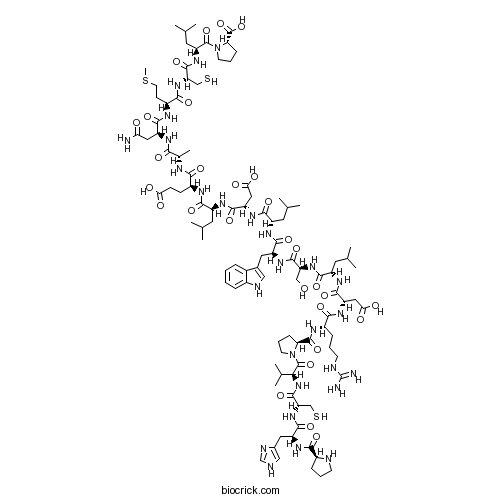
-
BCC2238
RITA (NSC 652287)
RITA is an inhibitor of p53-HDM-2 interaction, binds to p53dN, with a Kd of 1.5 nM, and also induces DNA-DNA cross-links.
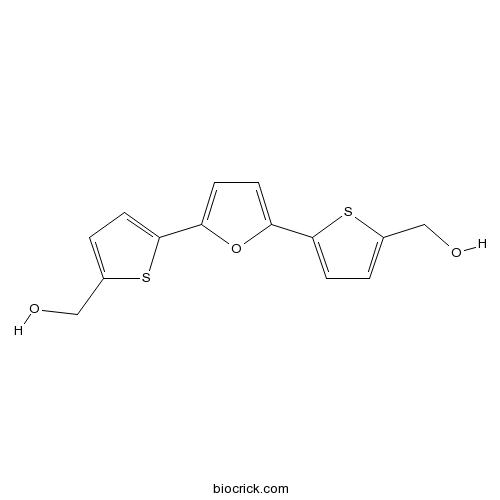
-
BCC1140
Caspase-3/7 Inhibitor I
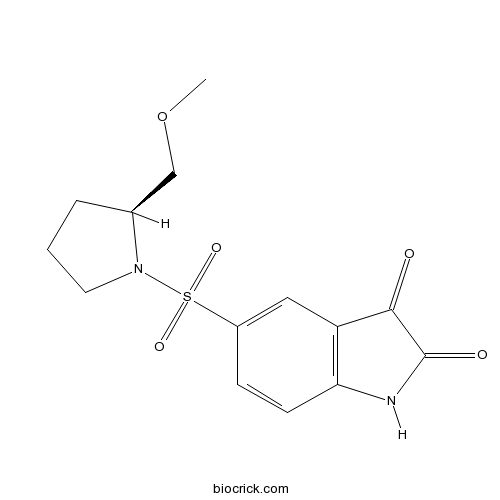
-
BCC5367
Emricasan
Emricasan (PF 03491390; IDN-6556) is an irreversible pan-caspase inhibitor. Emricasan inhibits Zika virus (ZIKV)-induced increases in caspase-3 activity and protected human cortical neural progenitors.

-
BCN2318
Gambogic acid
Gambogic Acid (Beta-Guttiferrin) is derived from the gamboges resin of the tree Garcinia hanburyi. Gambogic Acid (Beta-Guttiferrin) inhibits Bcl-XL, Bcl-2, Bcl-W, Bcl-B, Bfl-1 and Mcl-1 with IC50s of 1.47 μM, 1.21 μM, 2.02 μM, 0.66 μM, 1.06 μM and 0.79 μM.
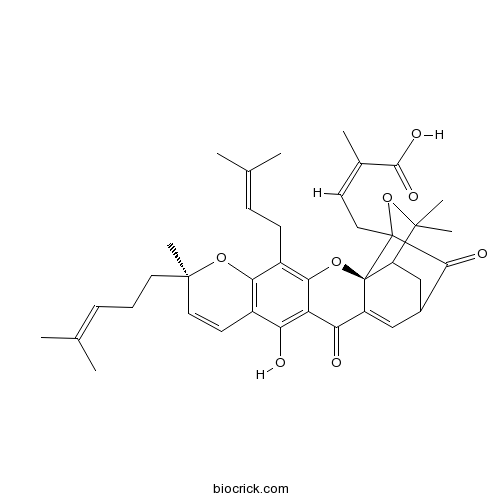
-
BCC4237
PM00104
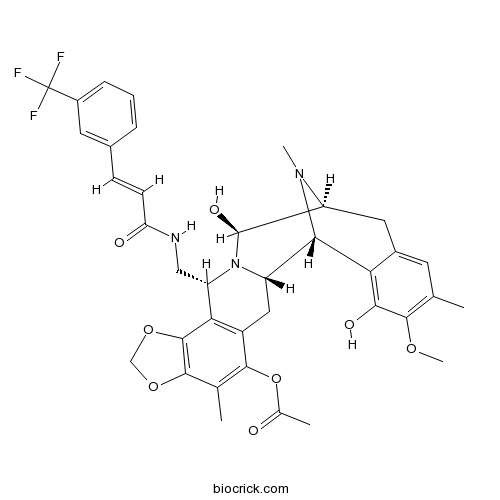
-
BCC4903
Doxifluridine
Doxifluridine(Ro 21-9738; 5'-DFUR) is a thymidine phosphorylase activator for PC9-DPE2 cells with IC50 of 0.62 μM.
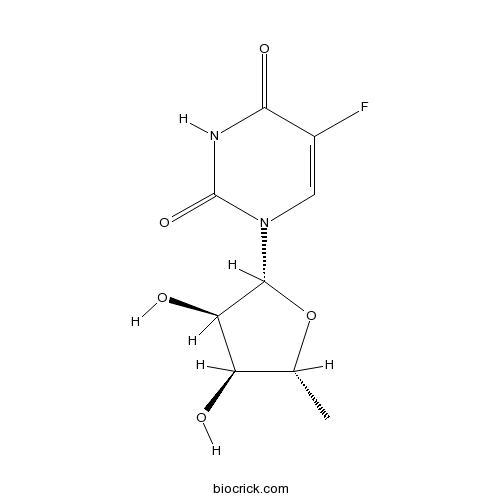
-
BCC3600
PAC-1
PAC-1 is an activator of procaspase-3 induces apoptosis in cancer cells with EC50 of 2.08 μM.
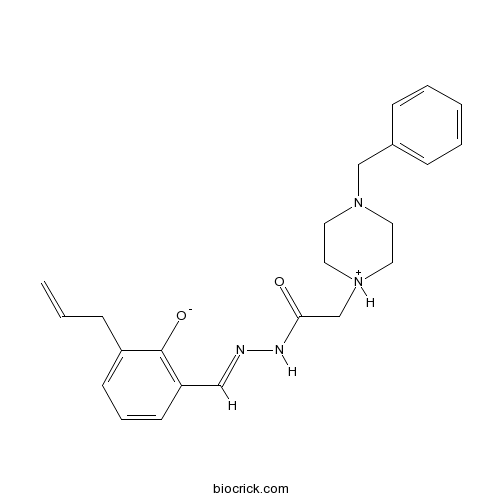
-
BCC2401
GRI 977143
Selective LPA2 agonist; antiapoptotic
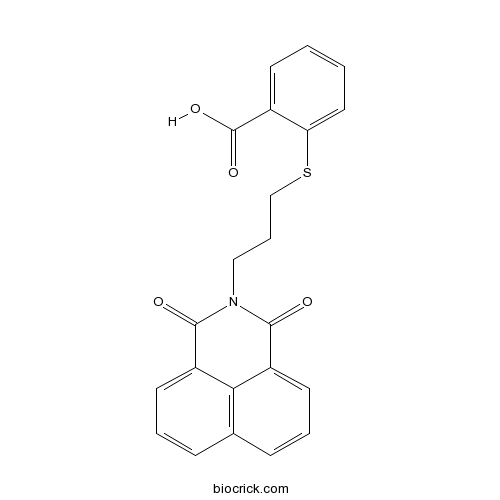
-
BCC1397
BAM7
BAM7 is a direct and selective activator of proapoptotic BAX with an IC50 of 3.3 μM.
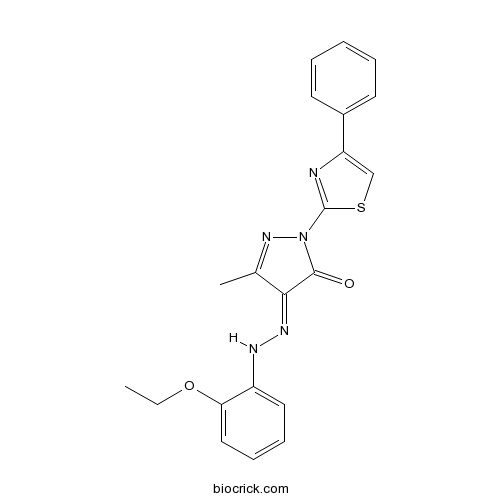
-
BCC8017
CFM 4
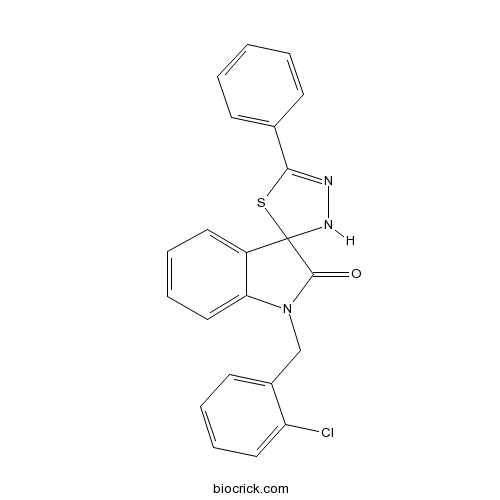
-
BCC2356
AZ 10417808
Selective non-peptide caspase-3 inhibitor
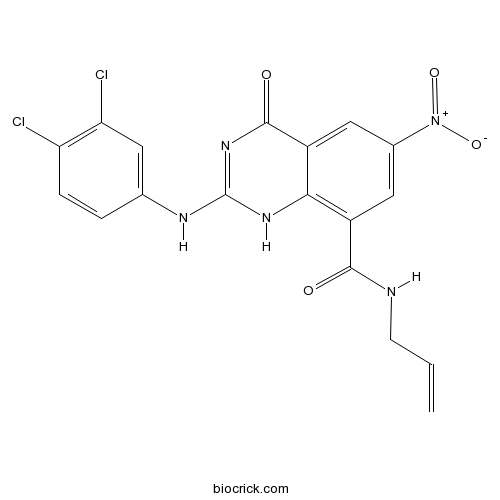
-
BCC2392
Bax channel blocker
BAI1 is a direct allosteric inhibitor of BAX.
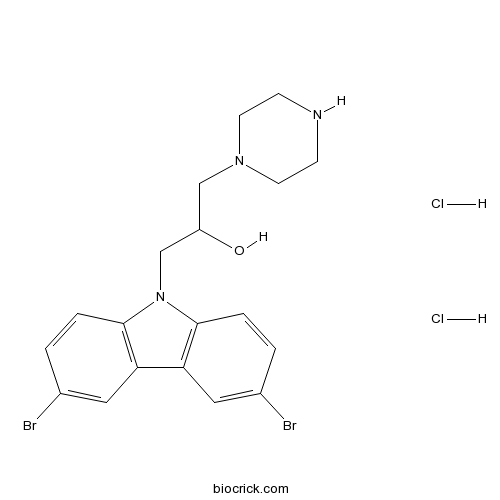
-
BCC2396
iMAC2
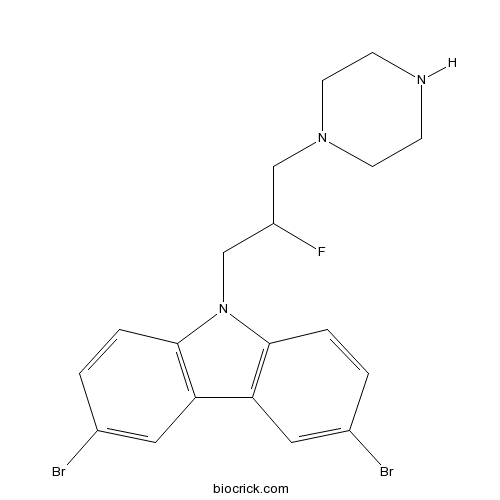
-
BCC2402
Mdivi 1
Mdivi-1 is a selective dynamin-related protein 1 (Drp1) inhibitor. Mdivi-1 is a mitochondrial division/mitophagy inhibitor.
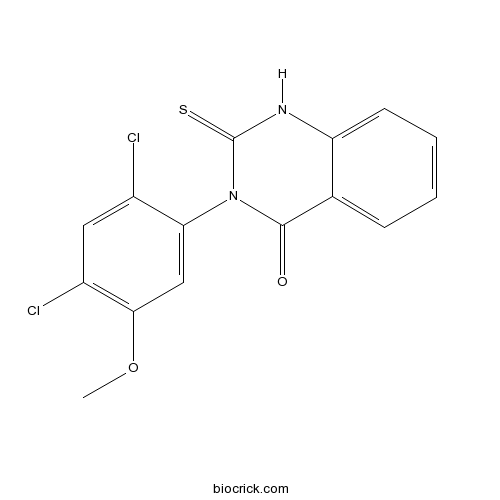
-
BCC1153
Bendamustine HCl
Bendamustine hydrochloride is a DNA cross-linking agent that causes DNA breaks, with alkylating and antimetabolite properties.
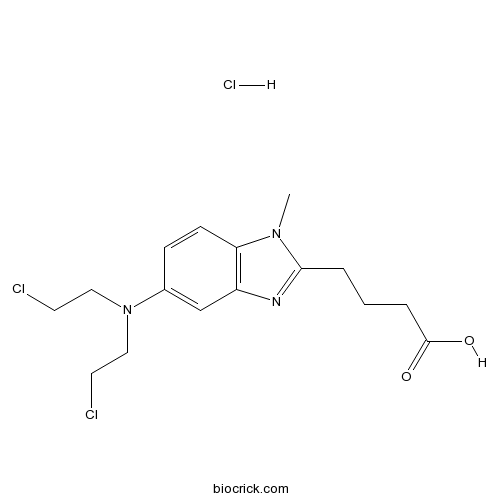
-
BCC2066
YM-155 hydrochloride
YM-155 hydrochloride is a novel survivin suppressant with an IC50 of 0.54 nM for the inhibition of survivin promoter activity.
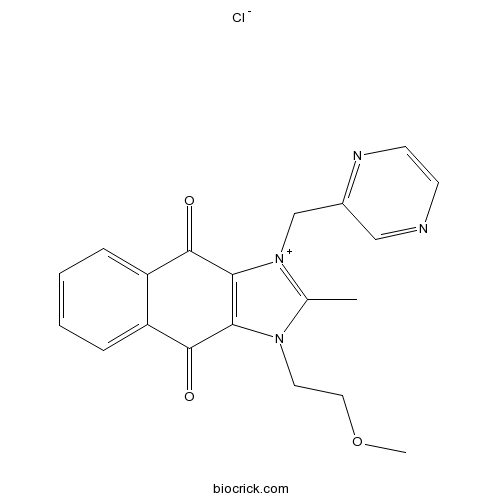
-
BCC1844
Pemetrexed disodium hemipenta hydrate
Pemetrexed disodium hemipenta hydrate is a novel antifolate, the Ki values of the pentaglutamate of LY231514 are 1.3, 7.2, and 65 nM for inhibits thymidylate synthase (TS), dihydrofolate reductase (DHFR), and glycinamide ribonucleotide formyltransferase (GARFT), respectively.
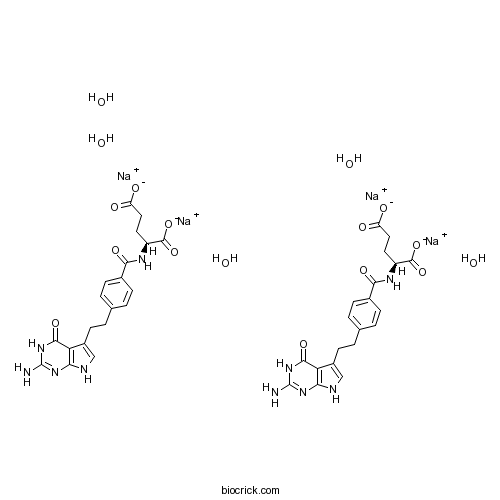
-
BCC2228
2-Methoxyestradiol (2-MeOE2)
2-Methoxyestradiol (2-ME2), an orally active endogenous metabolite of 17β-estradiol (E2), is an apoptosis inducer and an angiogenesis inhibitor with potent antineoplastic activity. 2-Methoxyestradiol also destablize microtubules.

-
BCC2239
Tenovin-1
Tenovin-1 is an inhibitor of sirtuin 1 and sirtuin 2, an activator of p53 and may have potential in the management of cancer.
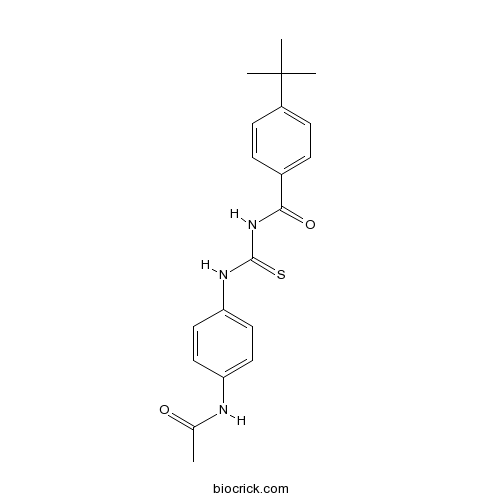
-
BCC8042
UC 112
UC-112 is a novel potent IAP(Inhibitor of apoptosis) inhibitor; potently inhibit cell growth in two human melanoma (A375 and M14) and two human prostate (PC-3 and DU145) cancer cell lines(IC50=0.7-3.4 uM).
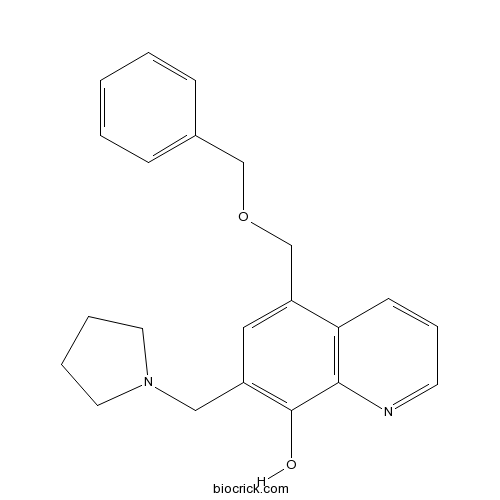
-
BCC2400
DAPK Substrate Peptide
Death associated protein kinase substrate (synthetic)
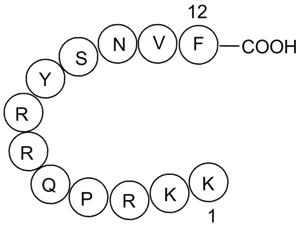
-
BCC2397
Muristerone A
Stimulates Bcl-XL mRNA transcription; antiapoptotic
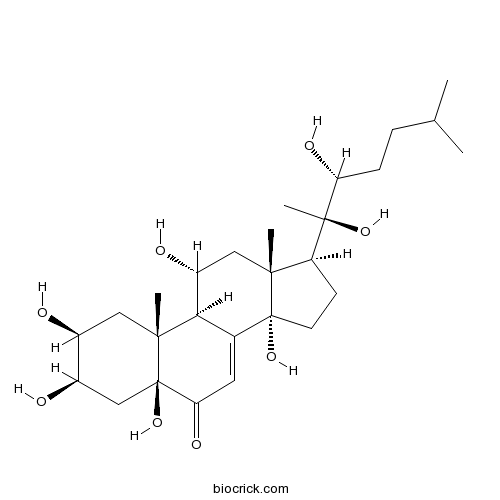
-
BCN1016
Capsaicin
Capsaicin ((E)-Capsaicin) is a mixture of Capsaicin and Dihydrocapsaicin. Capsaici is a TRPV1 agonist with an EC50 of 0.29 μM in HEK293 cells.

-
BCC2384
2,3-DCPE hydrochloride

-
BCC2247
Necrostatin-1
Necrostatin-1 (Nec-1) is a potent necroptosis inhibitor with an EC50 of 490 nM in Jurkat cells. Necrostatin-1 inhibits RIP1 kinase (EC50=182 nM). Necrostatin-1 is also an IDO inhibitor.
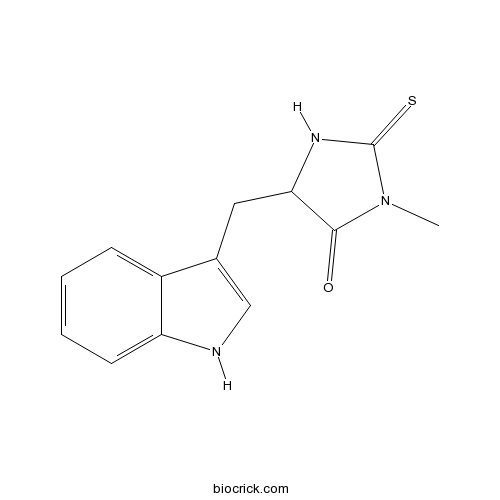
-
BCC2416
SJ 172550
SJ-172550 is a small molecule inhibitor of MDMX; competes for the wild type p53 peptide binding to MDMX with an EC50 of 5 μM.
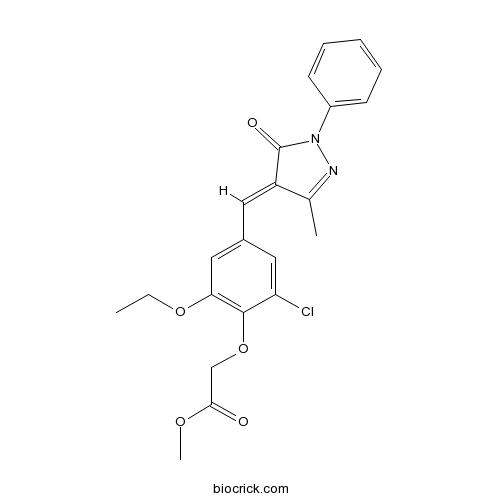
-
BCN5524
Betulinic acid
Betulinic acid is a natural pentacyclic triterpenoid, acts as a eukaryotic topoisomerase I inhibitor, with an IC50 of 5 μM, and possesses anti-HIV, anti-malarial, anti-inflammatory and anti-tumor properties. Betulinic acid acts as a new activator of NF-kB.
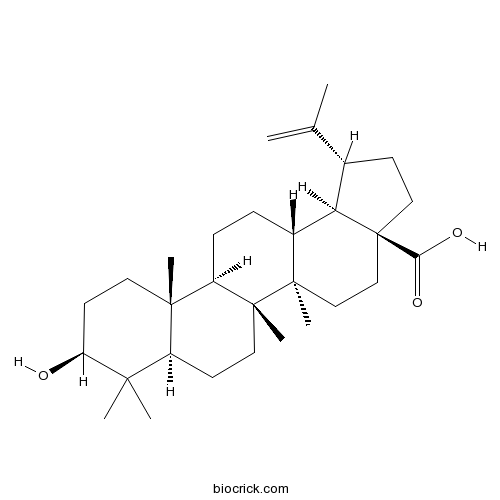
-
BCN2586
Plumbagin
Plumbagin (2-Methyljuglone) is a naphthoquinone isolated from Plumbago zeylanica L, exhibits anticancer and antiproliferative activities.
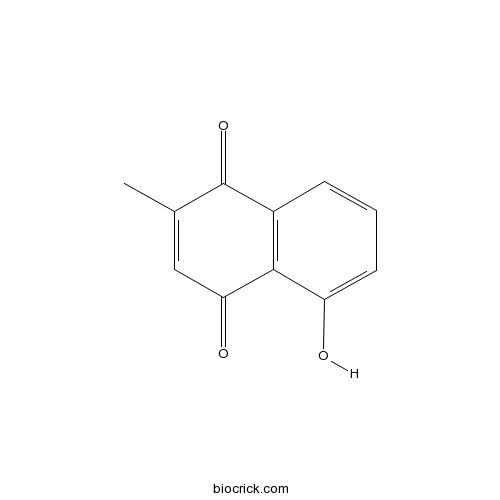
-
BCC2388
Mitomycin C
Rivaroxaban (BAY 59-7939) is a highly potent,selective and direct Factor Xa (FXa) inhibitor, achieving a strong gain in anti-FXa potency (IC50 0.7 nM; Ki 0.4 nM).
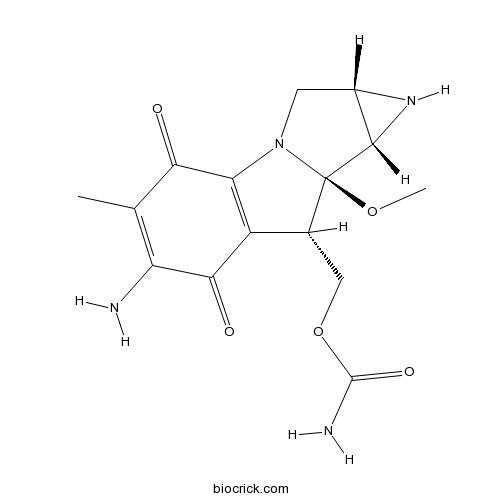
-
BCC2385
Actinomycin D
Actinomycin D (Dactinomycin) inhibits DNA repair with an IC50 of 0.42 μM. Actinomycin D is an autophagy activator.
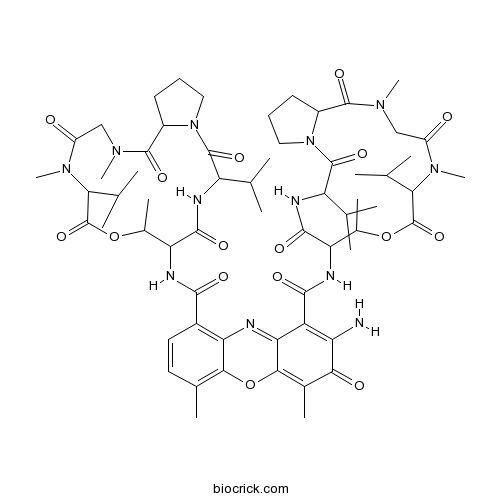
-
BCC2408
HLI 373
Hdm2 inhibitor; activates p53-dependent transcription
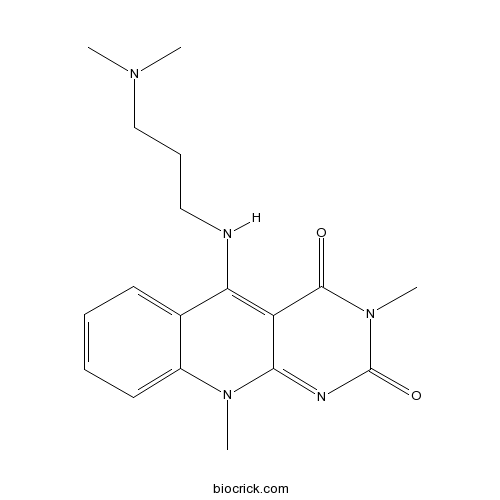
-
BCC2407
Cyclic Pifithrin-α hydrobromide
Pifithrin-β hydrobromide (PFT β hydrobromide) is a potent p53 inhibitor with an IC50 of 23 μM.
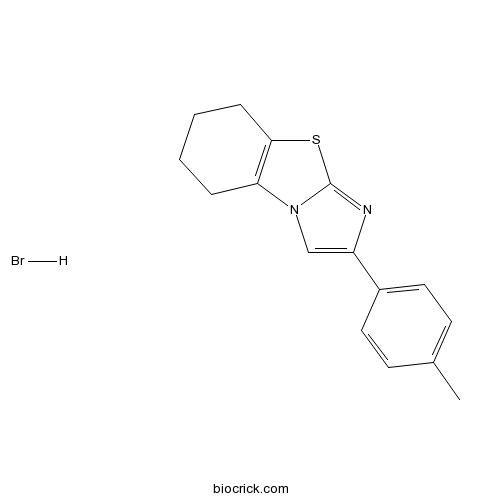
-
BCC5567
UMI-77
UMI-77 is a selective Mcl-1 inhibitor, which shows high binding affinity to Mcl-1 (IC50=0.31 μM). UMI-77 binds to the BH3 binding groove of Mcl-1 with Ki of 490 nM, showing selectivity over other members of anti-apoptotic Bcl-2 members.
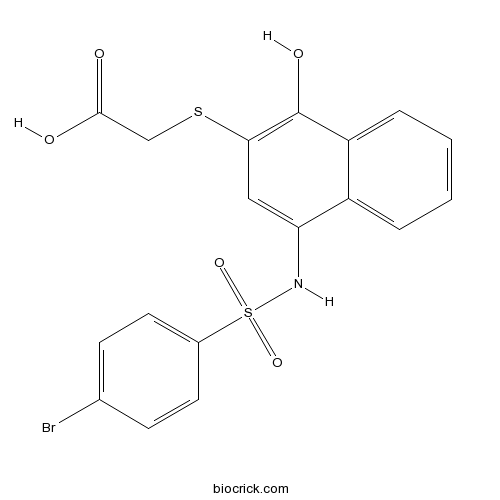
-
BCN5650
Matrine
Matrine (Matridin-15-one) is an alkaloid found in plants from the Sophora genus. It has a variety of pharmacological effects, including anti-cancer effects, and action as a kappa opioid receptor and u-receptor agonist.
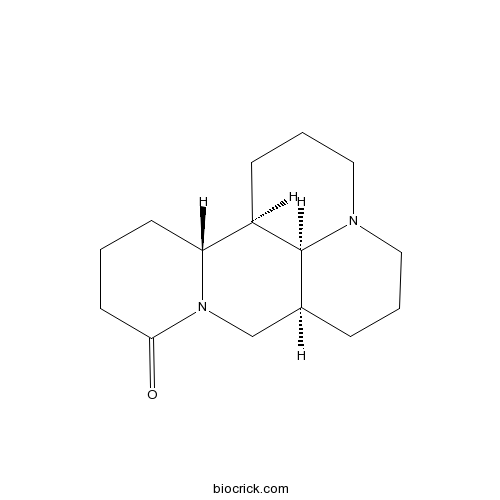
-
BCC3960
7-Hydroxy-2,3,4,5-tetrahydro-1H-benzofuro[2,3-c]azepin-1-one
CID755673 is a potent PKD inhibitor with IC50s of 182 nM, 280 nM and 227 nM for PKD1, PKD2 and PKD3, respectively.
![7-Hydroxy-2,3,4,5-tetrahydro-1H-benzofuro[2,3-c]azepin-1-one](/media/images/struct/BCC3960.png)
-
BCN4804
Deguelin
Deguelin, a naturally occurring rotenoid, is a potent PI3K/AKT inhibitor.
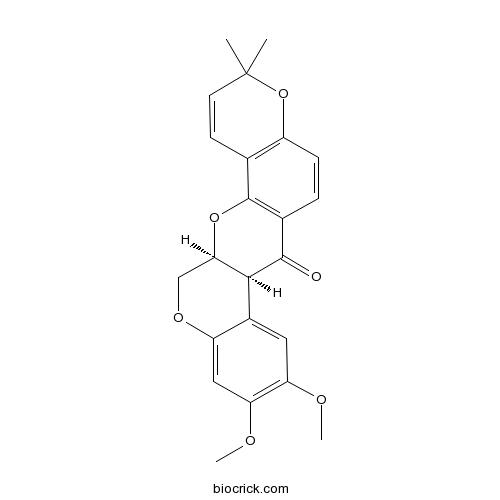
-
BCC2414
PRIMA-1MET
PRIMA-1Met restores wild-type conformation and function to mutant p53, and triggers apoptosis in tumor cells. PRIMA-1Met also targets the selenoprotein thioredoxin reductase 1 (TrxR1), a key regulator of cellular redox balance.
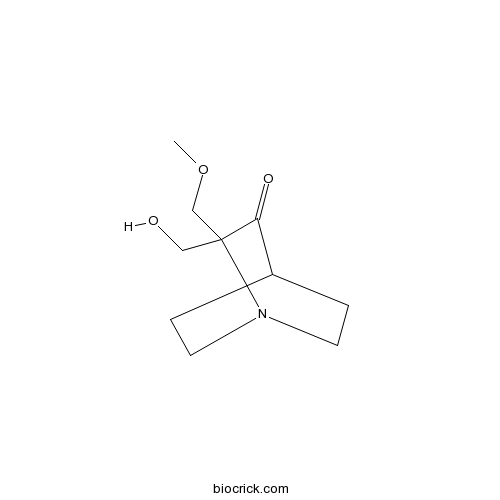
-
BCC1143
Apoptosis Inhibitor
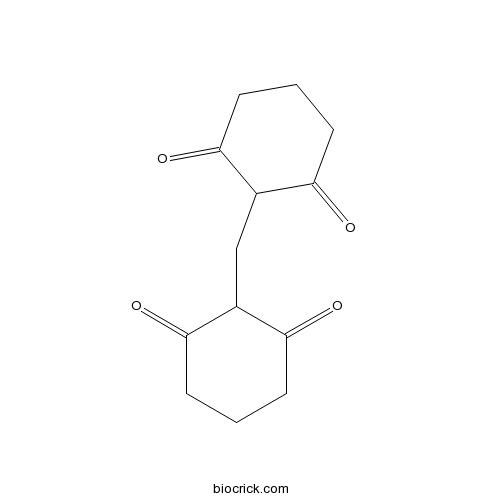
-
BCN2678
Embelin
Embelin is a cell-permeable benzoquinone compound that exhibits antitumor properties.

-
BCC2413
PRIMA-1
PRIMA-1 (NSC-281668) is a mutant p53 reactivator, restores the sensitivity of TP53 mutant-type thyroid cancer cells to the histone methylation inhibitor 3-Deazaneplanocin A.
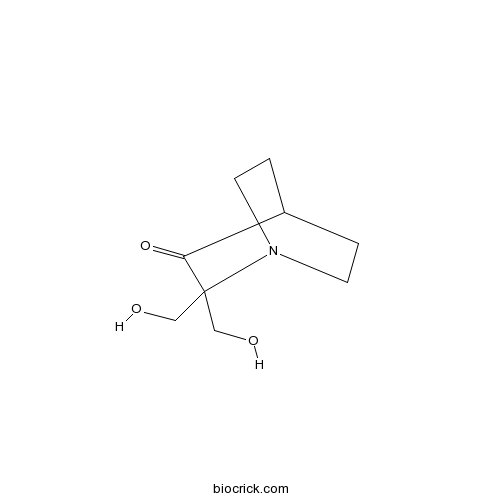
-
BCC2394
Bax inhibitor peptide V5
Bax inhibitor peptide V5 (BIP-V5) is a Bax-mediated apoptosis inhibitor, used for cancer treatment.

-
BCC2393
Bax inhibitor peptide P5

-
BCC2243
NSC 207895 (XI-006)
NSC 207895 suppresses MDMX with IC50 of 2.5 μM, leading to enhanced p53 stabilization/activation and DNA damage, and also regulates MDM2, an E3 ligase.
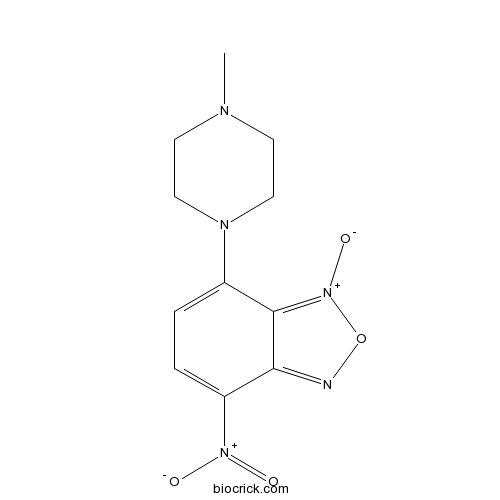
-
BCC2410
NSC 146109 hydrochloride
NSC 146109 hydrochloride is a small-molecule p53 activator that target MDMX and could be of value in treating breast cancer. NSC 146109 hydrochloride is a pseudourea derivative, promotes breast cancer cells to undergo apoptosis through activating p53 and inducing expression of proapoptotic genes[1].

-
BCC5503
Pifithrin-β
Pifithrin-β (PFT β) is a potent p53 inhibitor with an IC50 of 23 μM.
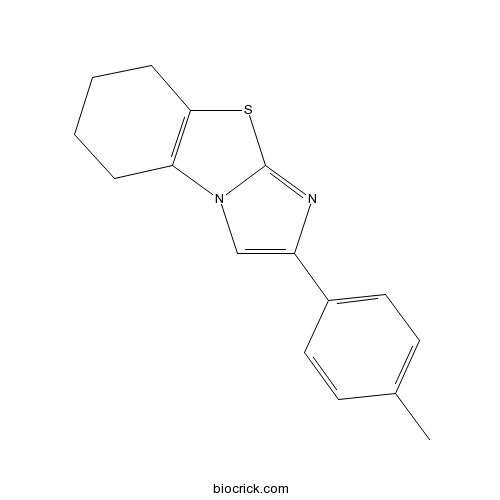
-
BCC2241
Pifithrin-α (PFTα)
Pifithrin-α hydrobromide is a p53 inhibitor which blocks its transcriptional activity and prevents cells from apoptosis. Pifithrin-α hydrobromide is also an aryl hydrocarbon receptor (AhR) agonist.
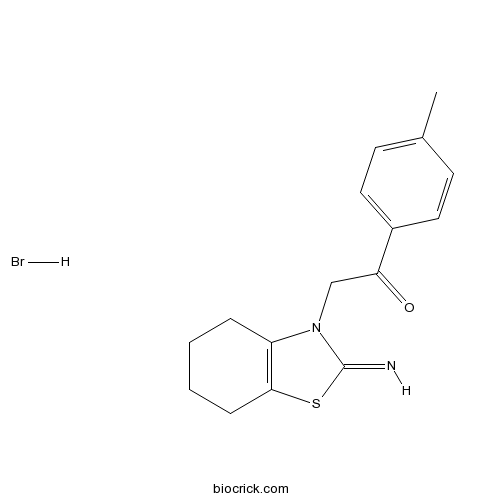
-
BCC2412
Pifithrin-μ
Pifithrin-μ is an inhibitor of p53 and HSP70, with antitumor and neuroprotective activity.
